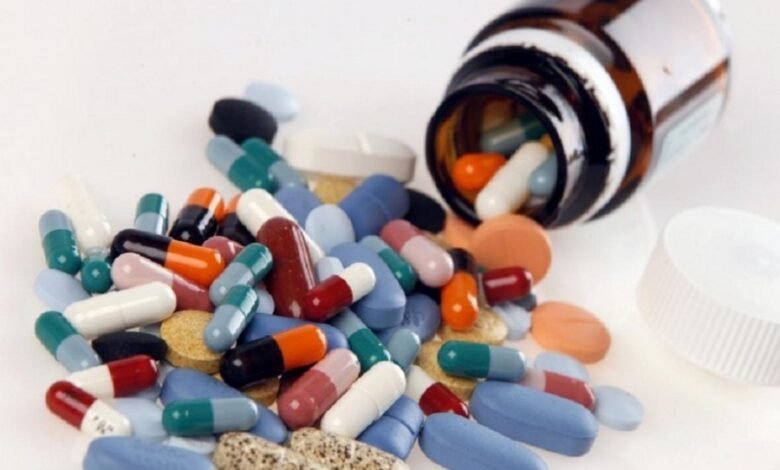
Life-Saving Drugs Explained: What You Need to Know
Life-saving drugs play a crucial role in modern medicine. They are designed to treat serious conditions, manage diseases, and save lives. Understanding these drugs can help us appreciate their importance and make informed decisions about our health. In this article, we will explore what life-saving drugs are, how they work, their types, and their significance in healthcare.
What Are Life-Saving Drugs?
Life-saving drugs are medications that can significantly improve health outcomes, especially in critical situations. These drugs can treat severe diseases, alleviate pain, and prevent death. For example, antibiotics can fight infections, while medications for heart conditions can help manage life-threatening situations.
A cyclophosphamide distributor is a company that supplies this essential chemotherapy medication to pharmacies, hospitals, and healthcare providers, ensuring its availability for patients undergoing cancer treatment.
The Importance of Life-Saving Drugs
Life-saving drugs are vital for several reasons:
- Disease Treatment: They help manage chronic illnesses like diabetes and hypertension, preventing complications that can be life-threatening.
- Emergency Care: In emergencies, these drugs can stabilize patients and improve their chances of survival.
- Preventative Measures: Vaccines and prophylactic medications can prevent diseases, reducing the risk of severe health issues.
- Improving Quality of Life: Many life-saving drugs can enhance the quality of life for patients with chronic conditions, allowing them to lead active lives.
Types of Life-Saving Drugs
Life-saving drugs come in various classes, each designed to treat specific health issues. Here are some common types:
1. Antibiotics
Antibiotics are used to treat bacterial infections. They work by killing bacteria or inhibiting their growth. Some common antibiotics include:
- Penicillin: Used for various infections, including strep throat and pneumonia.
- Amoxicillin: Commonly prescribed for ear infections and dental abscesses.
2. Antivirals
Antivirals are medications that treat viral infections. They work by inhibiting the virus’s ability to replicate. Examples include:
- Oseltamivir (Tamiflu): Used for influenza.
- Acyclovir: Treats herpes infections.
3. Antihypertensives
These drugs are used to lower blood pressure, reducing the risk of heart attack and stroke. Common classes include:
- ACE Inhibitors: Help relax blood vessels (e.g., Lisinopril).
- Beta-blockers: Reduce heart rate and blood pressure (e.g., Metoprolol).
4. Cardiovascular Drugs
These medications manage heart conditions, such as heart attacks or heart failure. Some important examples are:
- Aspirin: Reduces blood clotting and is often used in heart attack prevention.
- Statins: Lower cholesterol levels and reduce cardiovascular risk.
5. Cancer Treatments
Life-saving drugs for cancer include chemotherapy and targeted therapies. They help kill cancer cells or slow their growth. Examples are:
- Cisplatin: A chemotherapy drug used for various cancers.
- Imatinib (Gleevec): A targeted therapy for specific types of leukemia.
6. Insulin
For individuals with diabetes, insulin is a life-saving medication. It helps control blood sugar levels, preventing complications such as kidney failure and neuropathy.
7. Vaccines
Vaccines are crucial for preventing infectious diseases. They stimulate the immune system to recognize and fight pathogens. Notable examples include:
- MMR Vaccine: Protects against measles, mumps, and rubella.
- COVID-19 Vaccines: Help prevent severe illness from COVID-19.
How Life-Saving Drugs Work
Life-saving drugs work through various mechanisms depending on their type. Here’s a simplified explanation of how some categories function:
- Bacterial Inhibition: Antibiotics target specific processes in bacteria, like cell wall synthesis, leading to bacterial death.
- Viral Inhibition: Antivirals block the virus’s ability to replicate, stopping the infection from spreading.
- Blood Pressure Control: Antihypertensives help relax blood vessels or reduce heart workload, lowering blood pressure.
- Cancer Cell Destruction: Chemotherapy drugs damage the DNA of rapidly dividing cancer cells, inhibiting their growth.
- Immune Response Activation: Vaccines introduce a harmless part of the pathogen (like a protein), prompting the immune system to prepare for real infections.
Read more: Specialitymedz
The Development of Life-Saving Drugs
Creating life-saving drugs is a complex and lengthy process. Here are the key stages involved:
1. Research and Discovery
Scientists explore various compounds to identify those that may have therapeutic effects. This stage often involves screening thousands of substances for potential activity against diseases.
2. Preclinical Testing
Promising compounds undergo laboratory testing to evaluate their safety and effectiveness in animals before human trials. This stage helps identify any toxic effects.
3. Clinical Trials
Clinical trials are conducted in phases to test the drug on human subjects:
- Phase 1: A small group of healthy volunteers receives the drug to assess safety and dosage.
- Phase 2: The drug is given to a larger group with the target disease to evaluate its effectiveness and side effects.
- Phase 3: Conducted on thousands of patients, this phase compares the new drug to existing treatments.
4. Regulatory Approval
If clinical trials are successful, the drug company submits data to regulatory bodies (like the FDA in the U.S.) for approval. These agencies review the evidence before granting permission to market the drug.
5. Post-Market Surveillance
Even after approval, drugs are monitored for long-term safety and effectiveness. This helps identify any rare side effects that may not have appeared in trials.
The Role of Life-Saving Drugs in Healthcare
Life-saving drugs are essential in healthcare for several reasons:
- Increased Life Expectancy: Advances in medication have significantly increased life expectancy by effectively treating diseases that were once fatal.
- Reduced Hospitalization: Effective medications help manage chronic conditions, reducing the need for hospital admissions.
- Health Equity: Access to life-saving drugs can improve health outcomes for underserved populations, promoting equity in healthcare.
- Research Advancements: Ongoing research leads to the discovery of new life-saving drugs, expanding treatment options and improving patient outcomes.
Challenges and Considerations
Despite their importance, there are challenges in the field of life-saving drugs:
1. Cost and Accessibility
Many life-saving drugs are expensive, making them inaccessible to some patients. High costs can lead to inadequate treatment and worse health outcomes.
2. Drug Resistance
Overuse of antibiotics has led to drug-resistant bacteria, making some infections harder to treat. This is a significant public health concern.
3. Side Effects
While many life-saving drugs are effective, they can also have side effects that impact quality of life. Balancing benefits and risks is essential in treatment decisions.
4. Regulatory Hurdles
The lengthy and costly process of drug development can limit the availability of new treatments, delaying access for patients in need.
Conclusion
Life-saving drugs are an essential part of modern healthcare, providing critical treatments that can save lives and improve quality of life. Understanding what these drugs are, how they work, and the challenges surrounding them can empower patients and families to make informed health decisions. Continued investment in research, affordability, and access is vital to ensuring that everyone can benefit from these life-changing medications.







